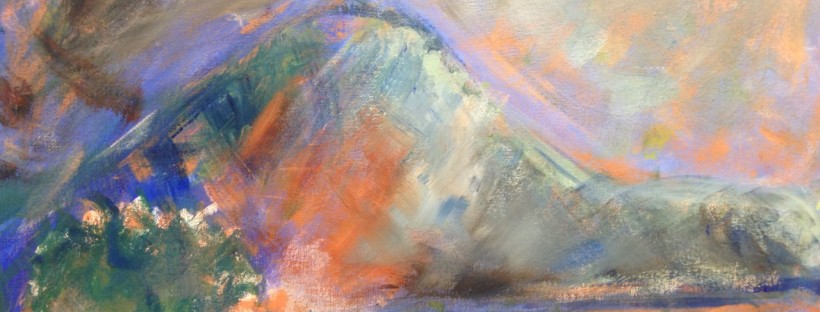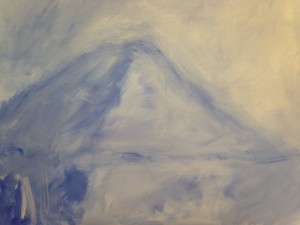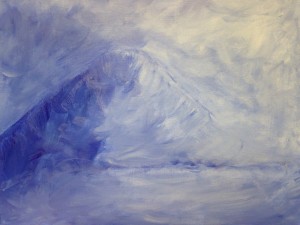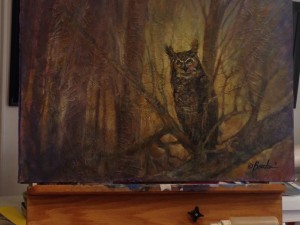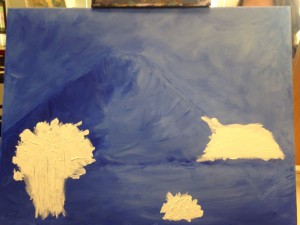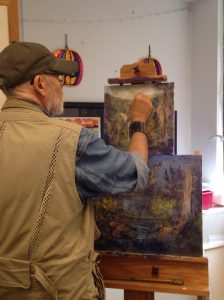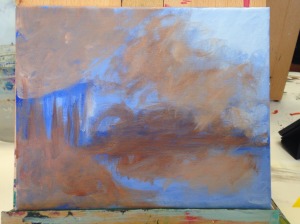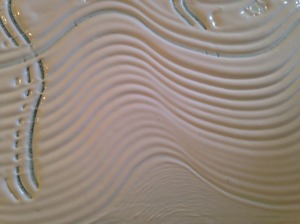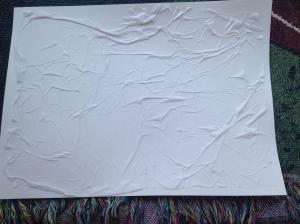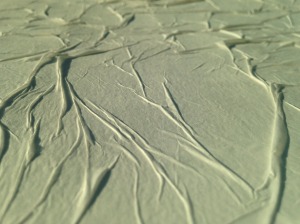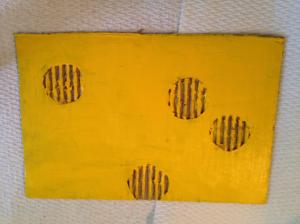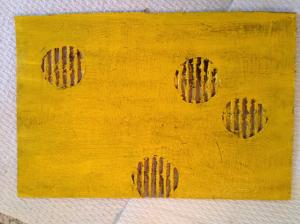“Art is never finished, only abandoned.”
– Attributed to Leonardo da Vinci
The final acrylic painting class at Rum River Art Center wrapped up a week ago, and I was sad it was over. The students were friendly, creative, and encouraging of each other’s efforts, and the instructor, Paul Boecher, was very skilled and helpful. During the last two classes, I continued to work on my mountain painting a la Paul Cezanne.

Mont Sainte-Victoire by Paul Cezanne
After my previous post, the painting ended up looking like this:

A bit of a happy mess, with lots of different colors, the basic mountain shape and an attempt at some kind of foreground at the left, and a light source at the top right. I played with it quite a bit, adding different colors and frankly just enjoying playing with the paints and paintbrush all over the canvas.
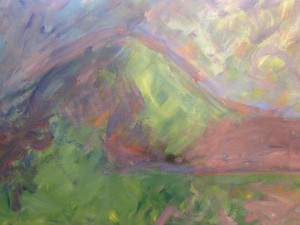

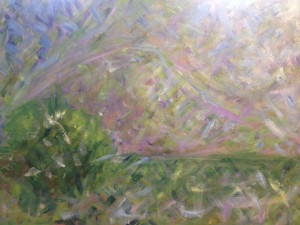

It kept changing every time I worked on it. Sometimes I thought it needed touches of light or dark, sometimes I wanted shades of violet in it, other times more green of different hues. One of my biggest challenges was mixing the exact shades I wanted from the basic paint colors. I couldn’t always achieve what I wanted in my mind. So I kept playing with it.



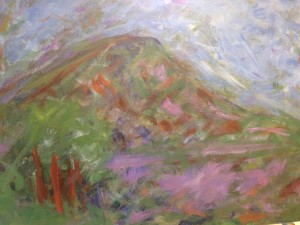


I wanted to alter the shape of the mountain somewhat, and to suggest the idea of a clump of foreground trees in the left, plus fields at the right below the mountain (as opposed to water). I enjoyed watching the painting change and evolve, even though there were times when I wasn’t sure I was improving it, and worried that I was possibly “wrecking” it. Our instructor Paul assured us that we shouldn’t worry about ruining our paintings, as anything could be undone, reworked or painted over.
Paul came by and reminded me of a couple of things that Cezanne liked to do: One was to use squares or rectangles of mostly primary colors, sometimes to show the source of light or different shades in the background of a painting, or as a study for the entire painting in terms of planes of color:

Cezanne, Mont Sainte-Victoire
and the other technique Cezanne liked was to add outlines of shapes such as mountains or trees, similar to the way that artists of that era saw used in Japanese woodblock prints —

Print by Katsushika Hokusai (1760-1849)
which were highly influential to Impressionist and post-Impressionist era French painters. So I added those at his direction (and then softened the bright rectangles of color a bit afterwards).


I was really enjoying myself, even while I often felt very unsure of what the final product would look like. I tried to focus on the process and forget about the product as much as possible.

When I returned for the final class, again at Paul’s direction, I worked on softening both sides of the mountain’s outline by painting away from either side of it (outside and inside the line).

Then I wondered what I wanted the foreground trees to look like. Initially I wanted to use this Cezanne painting as inspiration:

But that seemed too daunting. Then I also looked at some great Cezanne pine trees that he often used in his many depictions of Mt. Sainte-Victoire:

This also seemed very challenging. So I went another direction, borrowing loosely from Vincent Van Gogh’s olive trees:

Again, very loosely — I was mostly thinking about his cool wobbly-looking tree trunks when I painted mine.
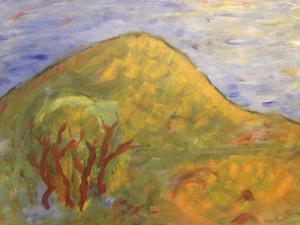


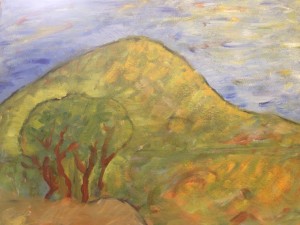
Then I added a thin outline of the overall tree shape, and Paul suggested to add a lighter yellow color behind the outline to make the trees stand out as being closer to the viewer.
From there, I softened those highlights behind the trees and played with more color, adding some reds here and there, and a clump of trees down on the plains beneath the mountains.


Finally, Paul came over before the end of class and suggested adding spots of brighter yellow to show where the light might be catching on the trees, in the mountain, etc., and then to soften those spots of color by blurring with the brush.


Here’s how it looks fully dry:

Overall, I learned a lot during this process. It took several weeks to get to this “finished” product. Am I happy with it? Not completely. Would I like to keep working on it? Maybe. But I’d also like to take some of what I’ve learned and start something new. I learned a great deal about acrylic painting techniques, and also about myself and my own artistic interests. I have a clear preference for certain kinds of art over others, and I prefer paintings that are less “realistic” — I’m much more interested in the interplay of shapes, colors, with a sense of movement and light. I very much enjoy the process of making art — the sheer fun of playing with colors, paints, and brushes on the canvas.
Happy painting!
Miriam

